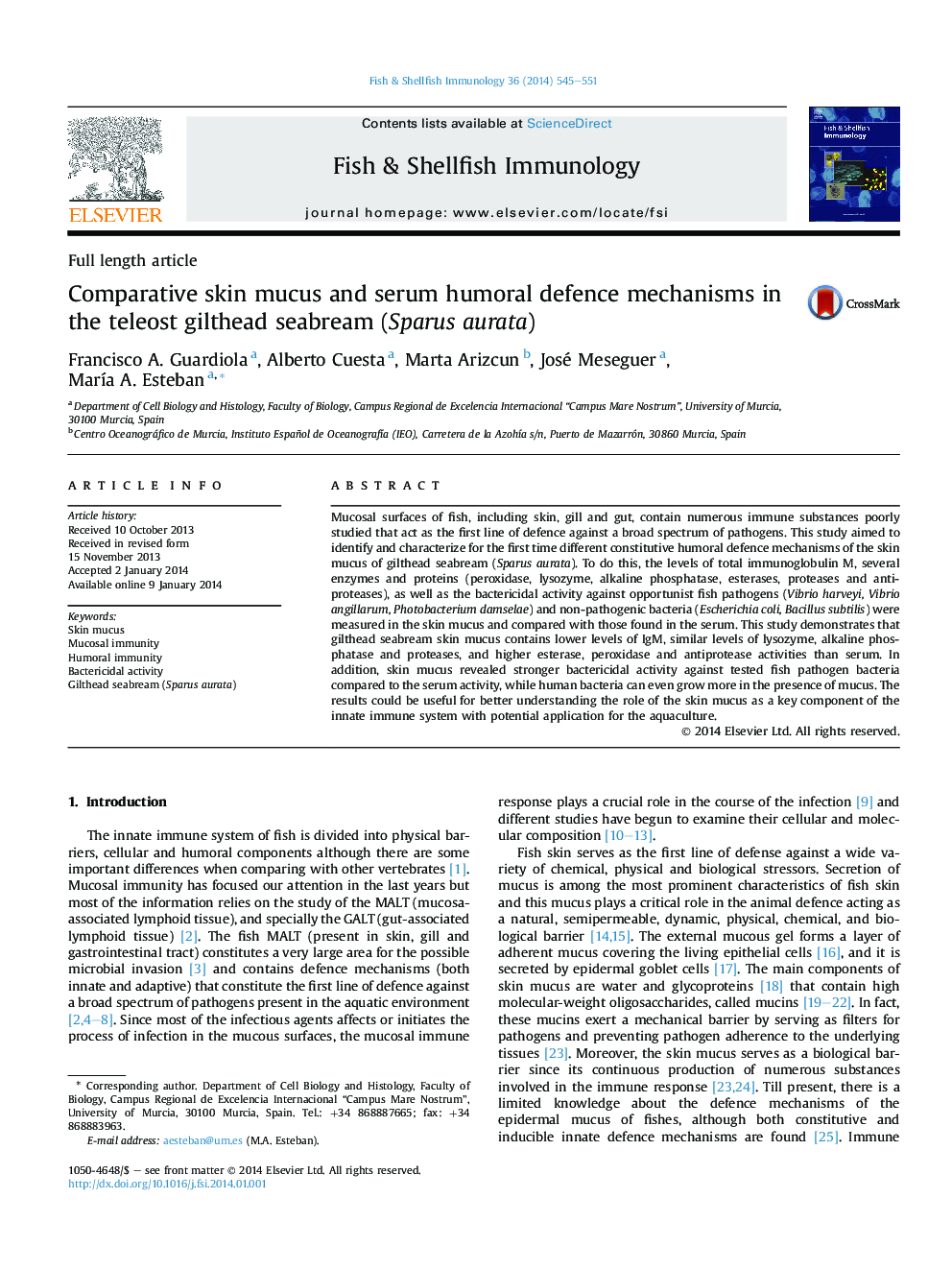| Article ID | Journal | Published Year | Pages | File Type |
|---|---|---|---|---|
| 2431447 | Fish & Shellfish Immunology | 2014 | 7 Pages |
•Immune parameters have been described in the gilthead seabream skin mucus.•Skin mucus contained higher peroxidase, esterase and antiprotease activities than serum.•Bactericidal activity of the skin mucus was very high against pathogenic bacteria.•The study of the immune response of skin is deserved.
Mucosal surfaces of fish, including skin, gill and gut, contain numerous immune substances poorly studied that act as the first line of defence against a broad spectrum of pathogens. This study aimed to identify and characterize for the first time different constitutive humoral defence mechanisms of the skin mucus of gilthead seabream (Sparus aurata). To do this, the levels of total immunoglobulin M, several enzymes and proteins (peroxidase, lysozyme, alkaline phosphatase, esterases, proteases and antiproteases), as well as the bactericidal activity against opportunist fish pathogens (Vibrio harveyi, Vibrio angillarum, Photobacterium damselae) and non-pathogenic bacteria (Escherichia coli, Bacillus subtilis) were measured in the skin mucus and compared with those found in the serum. This study demonstrates that gilthead seabream skin mucus contains lower levels of IgM, similar levels of lysozyme, alkaline phosphatase and proteases, and higher esterase, peroxidase and antiprotease activities than serum. In addition, skin mucus revealed stronger bactericidal activity against tested fish pathogen bacteria compared to the serum activity, while human bacteria can even grow more in the presence of mucus. The results could be useful for better understanding the role of the skin mucus as a key component of the innate immune system with potential application for the aquaculture.
